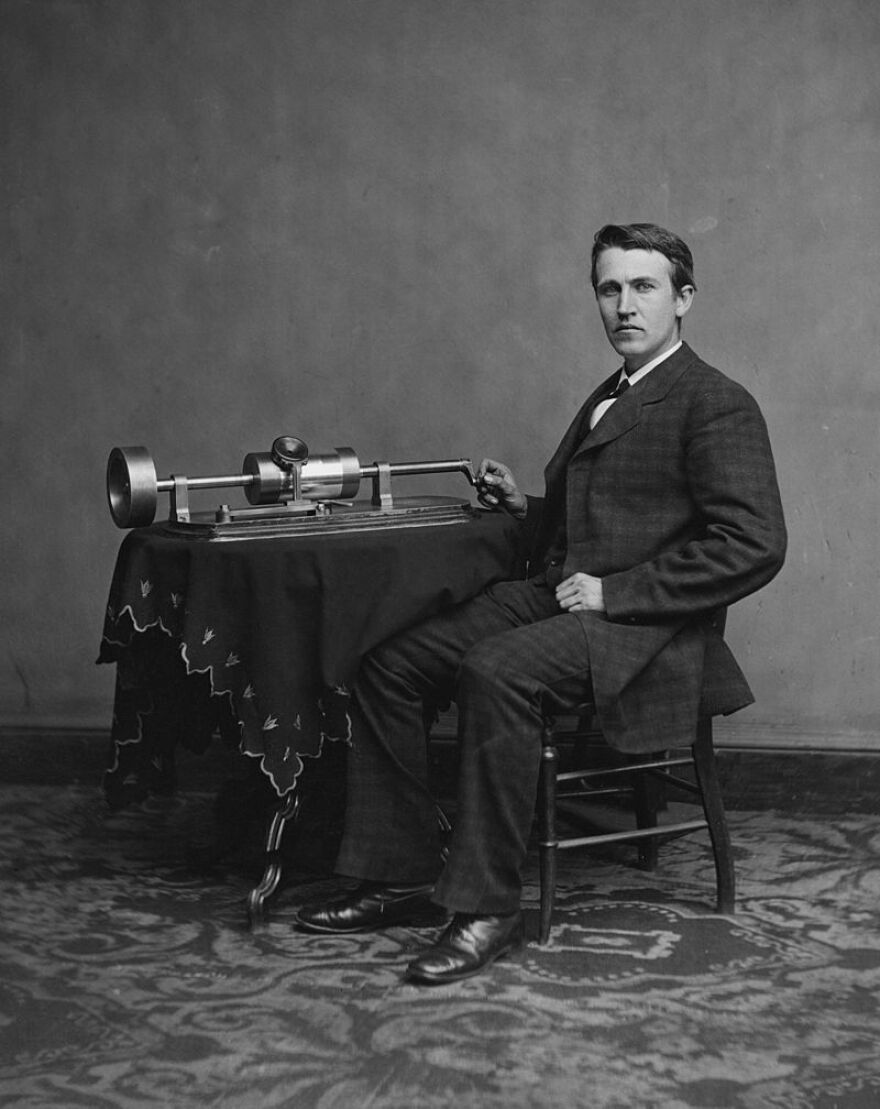Of all the advancements of the 20th century, the advent of recording technology has affected the world of music like no other. For centuries, classical music was the privilege of the rich and powerful. It was relegated to the church, concert hall, opera house or salon. But today, we can access the masterpieces of any era, anytime, anywhere played by the world’s most talented musicians.
The story of recording begins in 1857 with the French inventor Edouard-Leon Scott de Martinville. He developed the phonautograph. This machine used a cone to capture sound and transfer it to a stylus that carved a path through soot-covered paper. It was supposed to show the wave that sound creates and could not play the sound back to you. Today, with our technology, we have scanned that paper and have attempted to recreate the first examples of a recorded human voice. The earliest example, we believe, is Scott himself singing the French folk song “Au Claire de la Lune” on April 9, 1860.

In 1877, Thomas Edison patented the phonograph. This device could record sound and play it back. It used cylinders coated in tin or wax and the stylus either etched into the cylinder for recording or followed a pre-etched path for playback. It was originally meant for office use or for business communication. But it soon became apparent that there was a market for entertainment on this device. The drawback was that pre-recorded cylinders were difficult to reproduce.

Ten years later the gramophone, created by Emile Berliner, introduced a horizontal disc for recording and playback. This format made reproduction much simpler.
Until the 1920’s most recording and playback devices were purely mechanical wind-up machines with varying speeds. Recording took place around the cone of the machine itself. There was no mixing or post-production. In fact, due to restrictions of the technology, it was sometimes necessary to have the musicians play to multiple devices or perform the same piece over and over again in order to ensure an adequate amount of copies for sale.

Also, certain instruments recorded better than others. Brass instruments, like the trumpet or tuba, were much more successful on these devices than the cello or double bass. All of this changed with the creation of electrical recording and the microphone. This device leveled the playing field of instruments and increased the entire range of what could be recorded. Recordings began to sound more and more like a “live” performance.
Timeline is an exploration into the development of Western music. Follow the Timeline on our new web app where you can hear all of the episodes in order.





